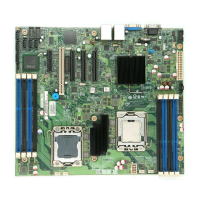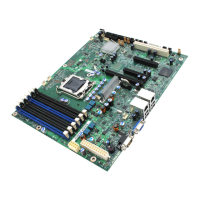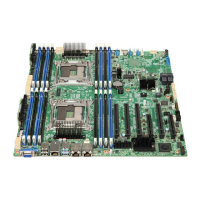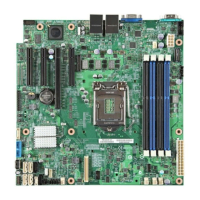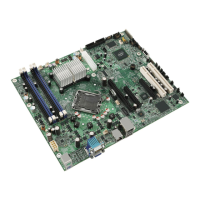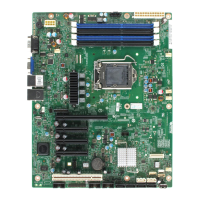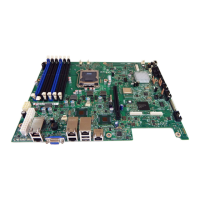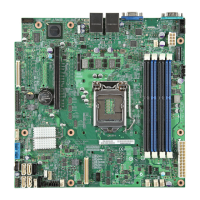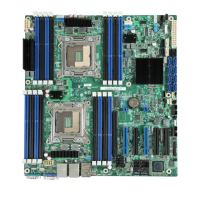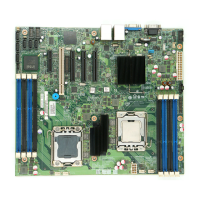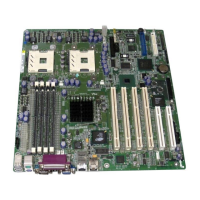Intel® 5000 Series Chipsets Server Board Family Datasheet System BIOS
Revision 1.1
Intel order number D38960-004
97
Output is displayed locally at the computer on video display devices. This is limited to VGA
displays in text or graphics mode. Local input may come from a USB keyboard. Mouse support
is not available.
The use of serial port console redirection allows a single serial cable to be used for each server
system. The serial cables from a number of servers can be connected to a serial concentrator or
to a switch. This allows access to each individual server system. The system administrator can
remotely switch from one server to another to manage large numbers of servers.
Through the redirection capabilities of the BMC on Intel
®
platforms, the serial port UART input /
output stream can be further redirected and sent over a platform LAN device as a packetized
serial byte stream. This BMC function is called Serial over LAN (SOL). It further optimizes space
requirements and server management capability.
Additional features are available if BIOS for console redirection is enabled on the same COM
port as the channel access serial port, and if the Channel Access Mode is set to either Always
Active or Preboot.
BIOS console redirection supports an extra control escape sequence to force the COM port to
the BMC. After this command is sent, the COM1 port attaches to the BMC Channel Access
serial port and Super I/O COM1 data is ignored. This feature allows a remote user to monitor
the status of POST using the standard BIOS console redirection features and then take control
of the system reset or power using the Channel Mode features. If a failure occurs during POST,
a watchdog time-out feature in the BMC automatically takes control of the COM1 port.
The character sequence that switches the multiplexer to the BMC serial port is “ESC O 9”
(denoted as ^[O9). This key sequence is above the normal ANSI function keys and is not used
by an ANSI terminal.
3.22 Wired For Management (WFM)
Wired for Management is an industry-wide initiative to increase overall manageability and
reduce total cost of ownership. WFM allows a server to be managed over a network. The
system BIOS supports the System Management BIOS Reference Specification, Version 2.4 to
help higher-level instrumentation software meet the Wired For Management Baseline
Specification, Revision 2.0 requirements.
3.22.1 PXE BIOS Support
The BIOS supports the EFI PXE implementation as specified in Chapter 15 of the Extensible
Firmware Interface Reference Specification, Version 1.1. To utilize this, the user must load EFI
Simple Network Protocol driver and the UNDI driver specific for the network interface card being
used. The UNDI driver should be included with the network interface card. The Simple Network
Protocol driver can be obtained from
http://developer.intel.com/technology/framework.
The BIOS supports legacy PXE option ROMs in legacy mode and includes the necessary PXE
ROMs in the BIOS image for the onboard controllers. The legacy PXE ROM is required to boot
a non-EFI operating system over the network.

